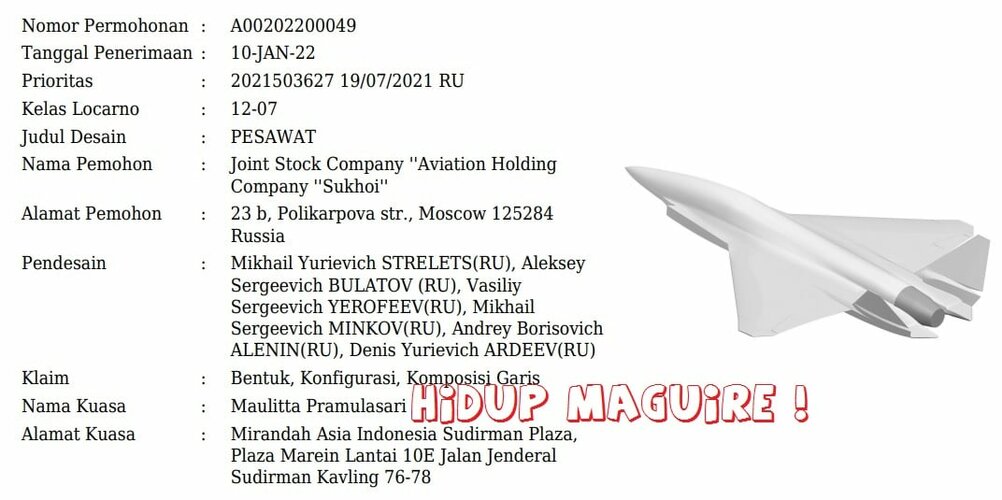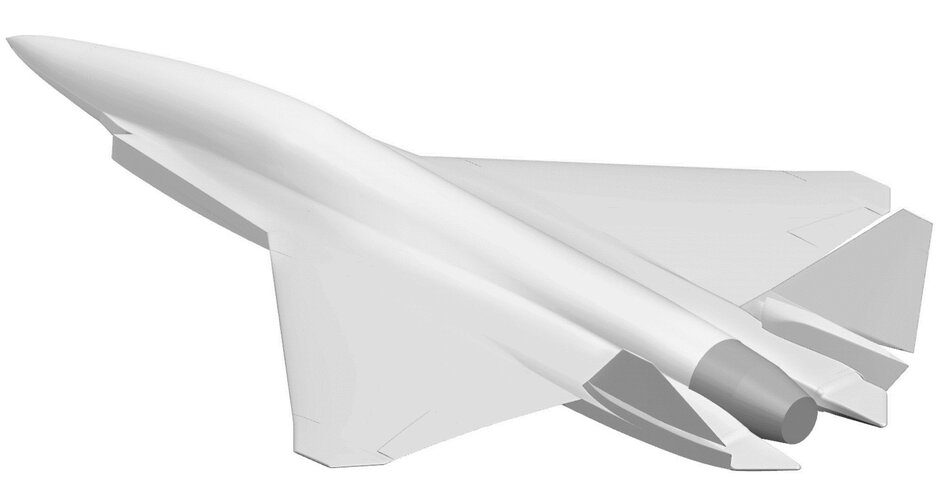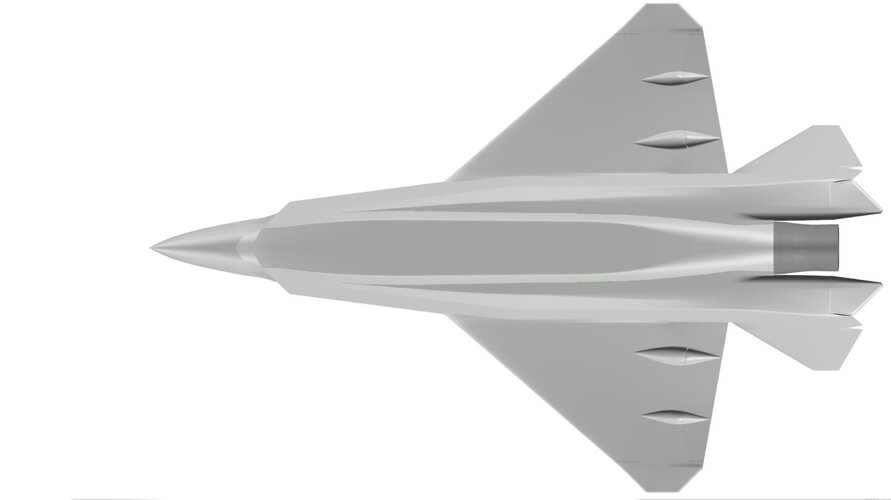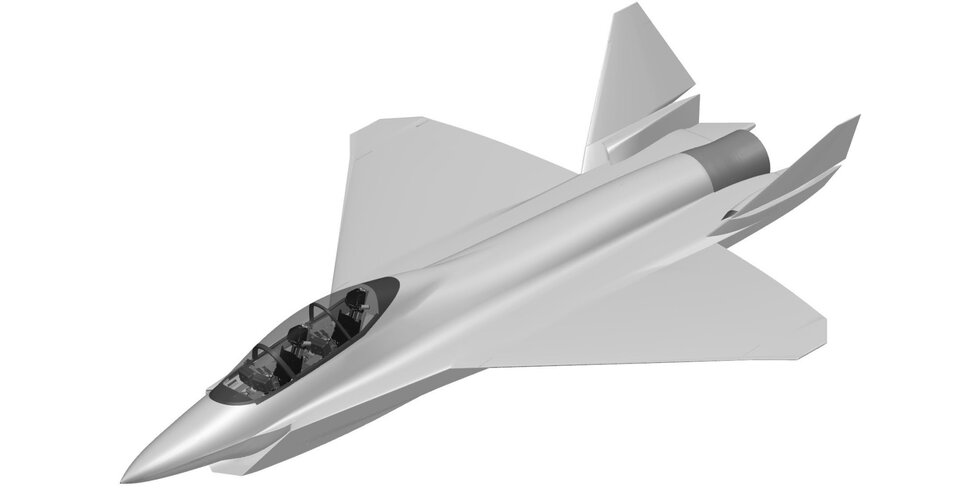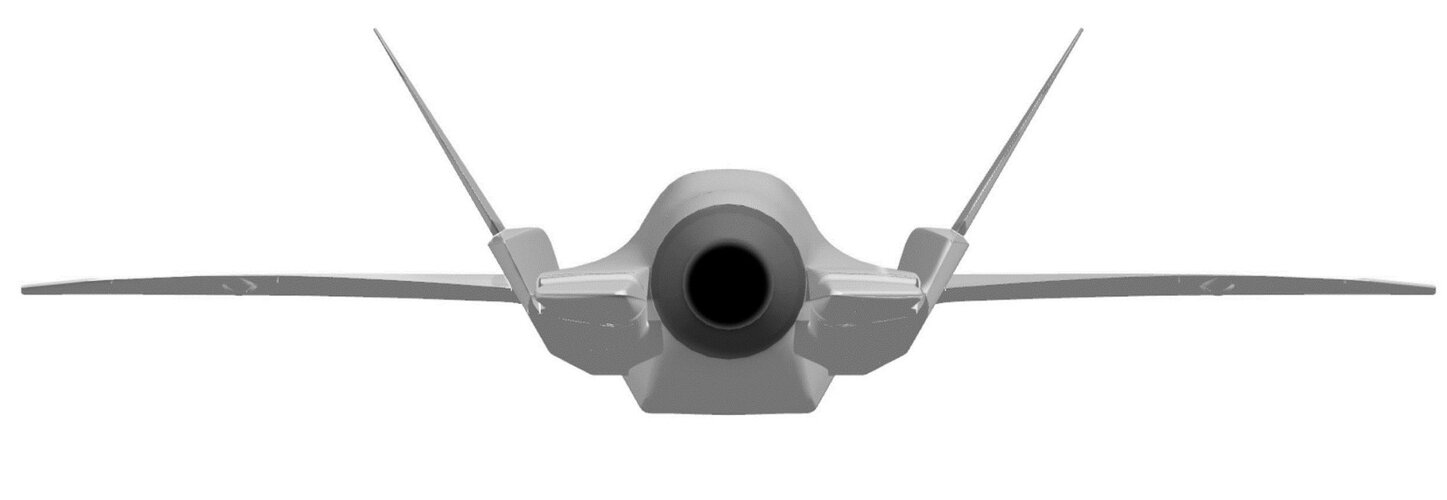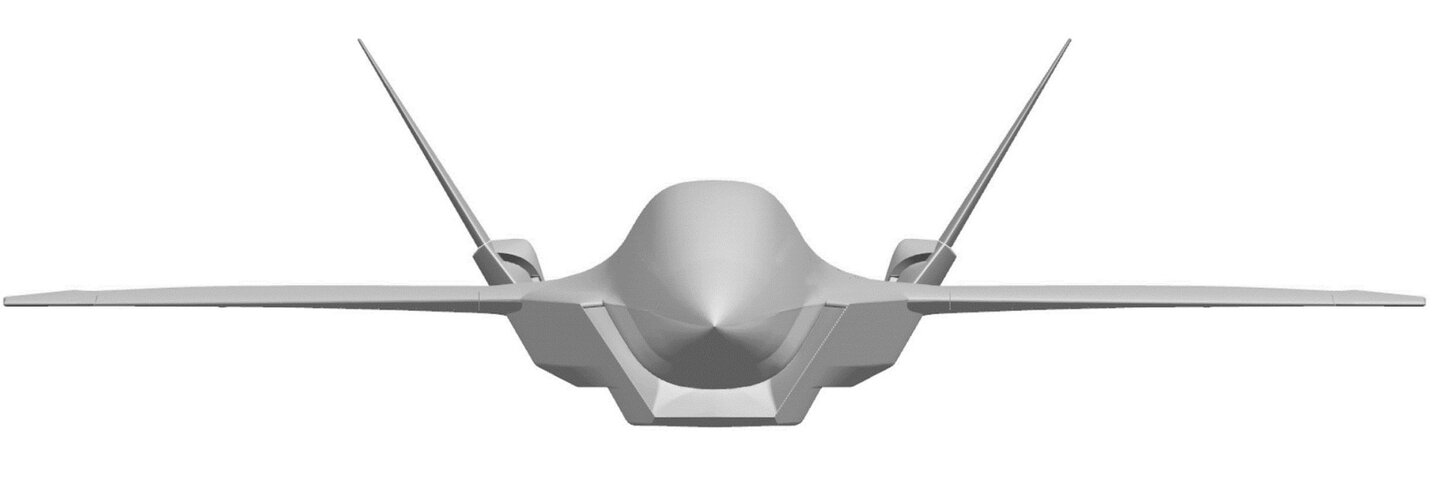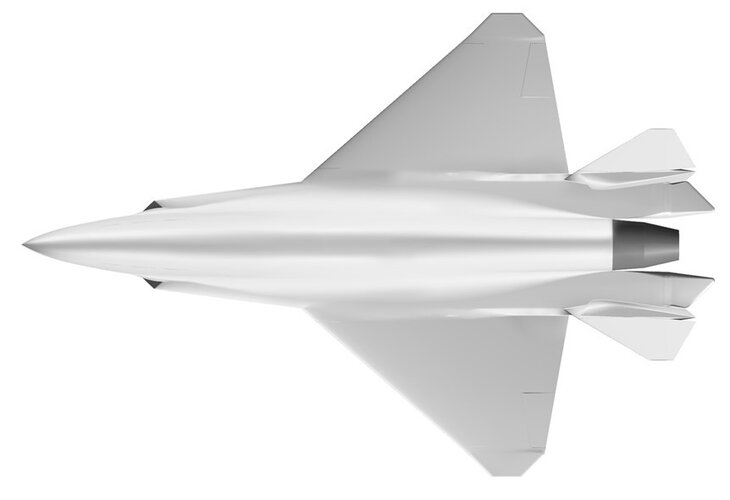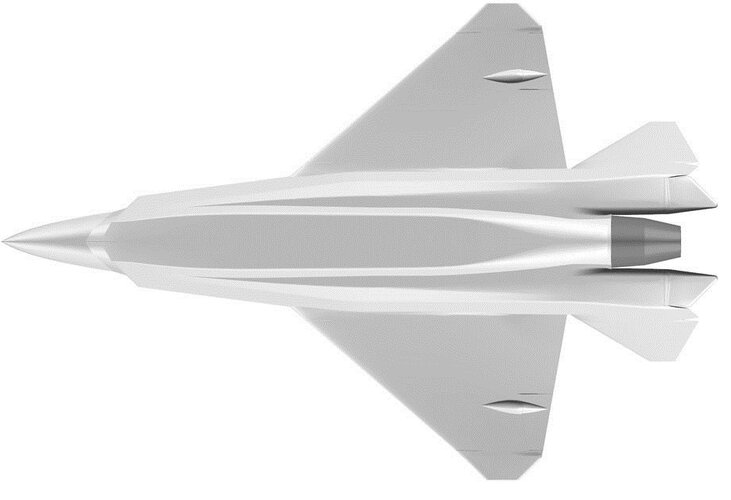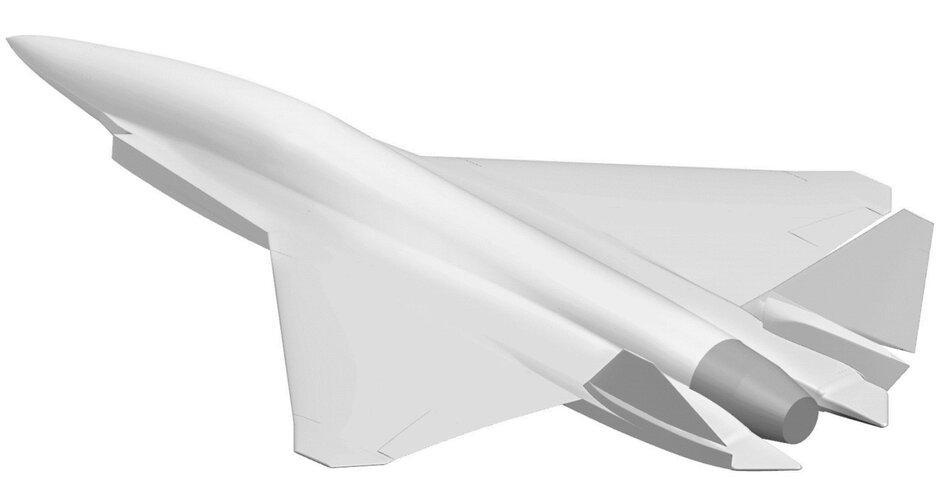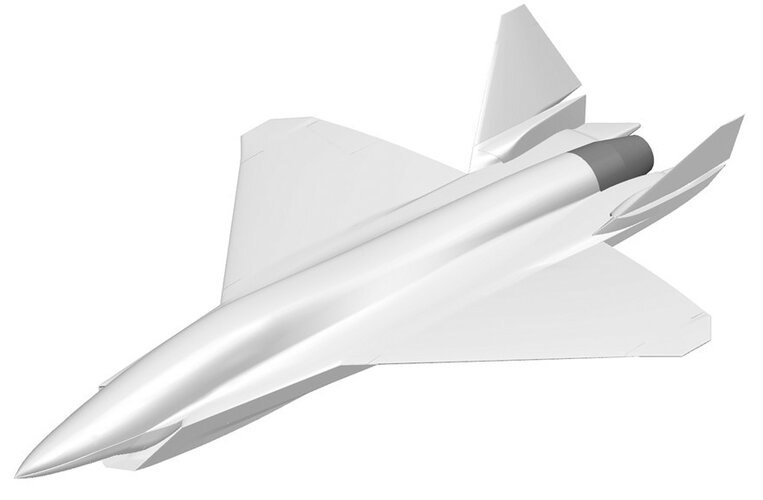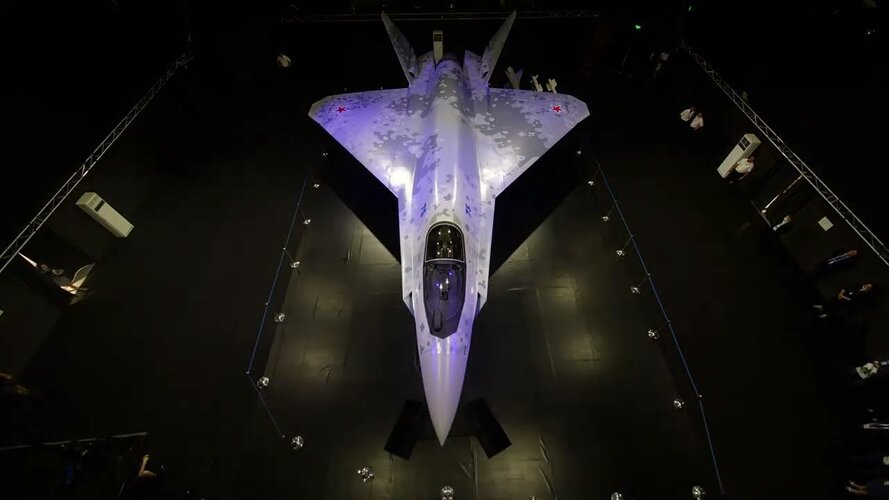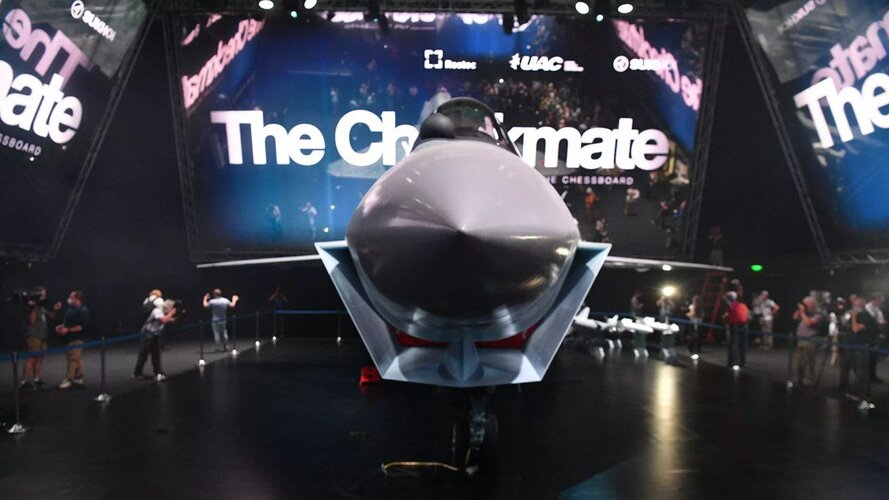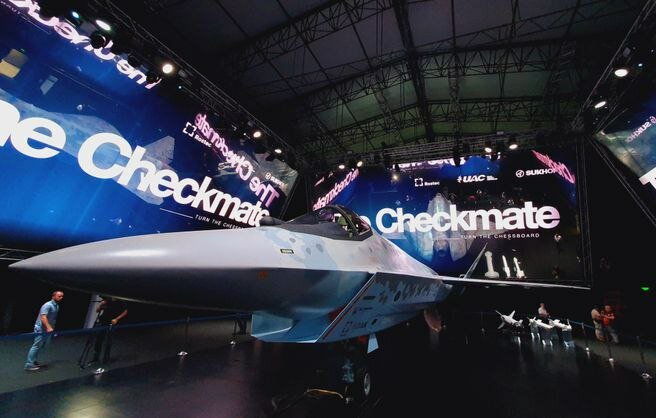You are using an out of date browser. It may not display this or other websites correctly.
You should upgrade or use an alternative browser.
You should upgrade or use an alternative browser.
Sukhoi T-75 LTS (CheckMate)
- Thread starter sublight_
- Start date
Cannonfodder43
ACCESS: Confidential
- Joined
- 8 December 2019
- Messages
- 107
- Reaction score
- 263
Nobody knows. There have been reports of certain factories and such halting production due to lack of imported parts but I am skeptical of those (typically Ukrainian or Western) claims.
Until we get hard evidence I am assuming things are carrying on as normal as can be
Until we get hard evidence I am assuming things are carrying on as normal as can be
- Joined
- 3 June 2006
- Messages
- 2,842
- Reaction score
- 2,544
I wouldn't be surprised, if Argentina would halt their fighter procurement for the foreseeable future. Any other modern fighter (i.e. Rafale) as an alternative to the Sukhoi LTS has parts made in the UK.
- Joined
- 11 February 2010
- Messages
- 1,451
- Reaction score
- 1,954
- Joined
- 11 March 2012
- Messages
- 3,016
- Reaction score
- 2,695
Given that LTS is supposedly based upon "proven" SU-57 technology makes it a tough sell to potential Second-World and Third-World customers. To date, SU-57 has only been built in the dozens and has only flown one or two days worth of combat missions in Syria. No SU-57 have been reported in Ukrainian skies.
Last edited by a moderator:
Acatomic
ACCESS: Confidential
- Joined
- 18 October 2020
- Messages
- 150
- Reaction score
- 271
Acatomic
ACCESS: Confidential
- Joined
- 18 October 2020
- Messages
- 150
- Reaction score
- 271
Never mind, I found it  :
:
Thanks to -> http://paralay.iboards.ru/viewtopic.php?p=664016#p664016
There's also a patent application for a two seater version:
RU2021503628
STEALTH SUPERSONIC SINGLE - ENGINE, TWO SEAT AIRCRAFT
But for some reason Google search can't show it....
Thanks to -> http://paralay.iboards.ru/viewtopic.php?p=664016#p664016
There's also a patent application for a two seater version:
RU2021503628
STEALTH SUPERSONIC SINGLE - ENGINE, TWO SEAT AIRCRAFT
But for some reason Google search can't show it....
- Joined
- 1 April 2006
- Messages
- 10,729
- Reaction score
- 6,751
- Joined
- 1 April 2006
- Messages
- 10,729
- Reaction score
- 6,751
Interesting... the UCAV has only one pair of underwing actuator fairings and DSI compression bumps even in the air scoops at the base of the fins. Neither the UCAV nor the twin-seater have the central strut in the main intake.
LMFS
ACCESS: Top Secret
- Joined
- 19 March 2019
- Messages
- 511
- Reaction score
- 760
Quite interesting how Sukhoi criticises their own Su-57 to justify the patent of the LTS (RU 2770885):
The disadvantages of aircraft known from the prior art include a large geometric and weight dimension that occurs in connection with the use of two engines. The presence of two main cargo compartments makes it impossible to place bulky cargo in the side compartments. In addition, placing the main and side cargo compartments, air intake channels and wheel niches of the main landing gear supports at the same distance increases the area of the mid-section of the aircraft, which, together with a large number of aerodynamic control surfaces, increases the area of the washed surface of the aircraft, leads to an increase in weight and aerodynamic drag of the aircraft. The presence of an all-rotating horizontal tail, which forms an acute angle with an all-rotating vertical tail, leads to an increase in the ESR in the lateral hemisphere, which requires special coatings to reduce. The direct channels of the power plant's air intakes make it necessary to install special devices in them that reduce the effective dispersion area (ESR) of engines in the front hemisphere, which also leads to an increase in the weight of the aircraft. The location of the air intakes for purging heat exchangers of aircraft systems and motor compartments on the front part of the pylons of the all-rotating vertical tail unit leads to an increase in the ESR in the front hemisphere and side hemisphere, which requires the use of special measures to reduce the ESR, which causes an increase in the weight of the aircraft.
The technical task to achieve which the invention is aimed is to eliminate the disadvantages of aircraft known from the prior art and create a light tactical aircraft with a smaller geometric and weight dimension, low radar visibility, and the ability to accommodate large-sized cargo.
Also the capacity to carry "bulky" (A2G?) ordnance is confirmed for the side bays:
The location of the niches of the main landing gear supports behind the side cargo compartments allows you to reduce the area of the midsection, while at the same time allowing you to get a significant volume of side cargo compartments, ensuring the placement of bulky cargo in them.
The disadvantages of aircraft known from the prior art include a large geometric and weight dimension that occurs in connection with the use of two engines. The presence of two main cargo compartments makes it impossible to place bulky cargo in the side compartments. In addition, placing the main and side cargo compartments, air intake channels and wheel niches of the main landing gear supports at the same distance increases the area of the mid-section of the aircraft, which, together with a large number of aerodynamic control surfaces, increases the area of the washed surface of the aircraft, leads to an increase in weight and aerodynamic drag of the aircraft. The presence of an all-rotating horizontal tail, which forms an acute angle with an all-rotating vertical tail, leads to an increase in the ESR in the lateral hemisphere, which requires special coatings to reduce. The direct channels of the power plant's air intakes make it necessary to install special devices in them that reduce the effective dispersion area (ESR) of engines in the front hemisphere, which also leads to an increase in the weight of the aircraft. The location of the air intakes for purging heat exchangers of aircraft systems and motor compartments on the front part of the pylons of the all-rotating vertical tail unit leads to an increase in the ESR in the front hemisphere and side hemisphere, which requires the use of special measures to reduce the ESR, which causes an increase in the weight of the aircraft.
The technical task to achieve which the invention is aimed is to eliminate the disadvantages of aircraft known from the prior art and create a light tactical aircraft with a smaller geometric and weight dimension, low radar visibility, and the ability to accommodate large-sized cargo.
Also the capacity to carry "bulky" (A2G?) ordnance is confirmed for the side bays:
The location of the niches of the main landing gear supports behind the side cargo compartments allows you to reduce the area of the midsection, while at the same time allowing you to get a significant volume of side cargo compartments, ensuring the placement of bulky cargo in them.
Last edited:
icyplanetnhc (Steve)
Trekking into the cosmic ocean
What's interesting is that in Sukhoi's T-50/Su-57 patent, the F-22 is cited as the baseline design for a "supermaneuverable stealth fighter" but one of the biggest criticisms was the F-22's inability to have weapon bays between the engines, resulting in insufficient payload (particularly in large air-to-ground ordnance) to be a multirole fighter. This was repeated by Mikhail Strelets in a fairly recent TV interview as well.
It's a bit ironic that the LTS is likely very similar in size and gross weight to the E-721 that Mikoyan had submitted to the PAK FA competition in 2002 and lost to the T-50. At the time, the T-50 was likely the largest aircraft that the Russian Defense Ministry is willing to spend, as it sought for something smaller and less expensive than the MiG MFI and replace both the MiG-29 and Su-27, rather than having a "heavy" and "light" mix. Of course, the LTS has the advantage of being a much more contemporaneous design and having substantial parts commonality with the Su-57. I guess we'll see if this plays out.
It's a bit ironic that the LTS is likely very similar in size and gross weight to the E-721 that Mikoyan had submitted to the PAK FA competition in 2002 and lost to the T-50. At the time, the T-50 was likely the largest aircraft that the Russian Defense Ministry is willing to spend, as it sought for something smaller and less expensive than the MiG MFI and replace both the MiG-29 and Su-27, rather than having a "heavy" and "light" mix. Of course, the LTS has the advantage of being a much more contemporaneous design and having substantial parts commonality with the Su-57. I guess we'll see if this plays out.
Last edited:
RavenOne
ACCESS: Top Secret
- Joined
- 18 June 2008
- Messages
- 863
- Reaction score
- 1,957
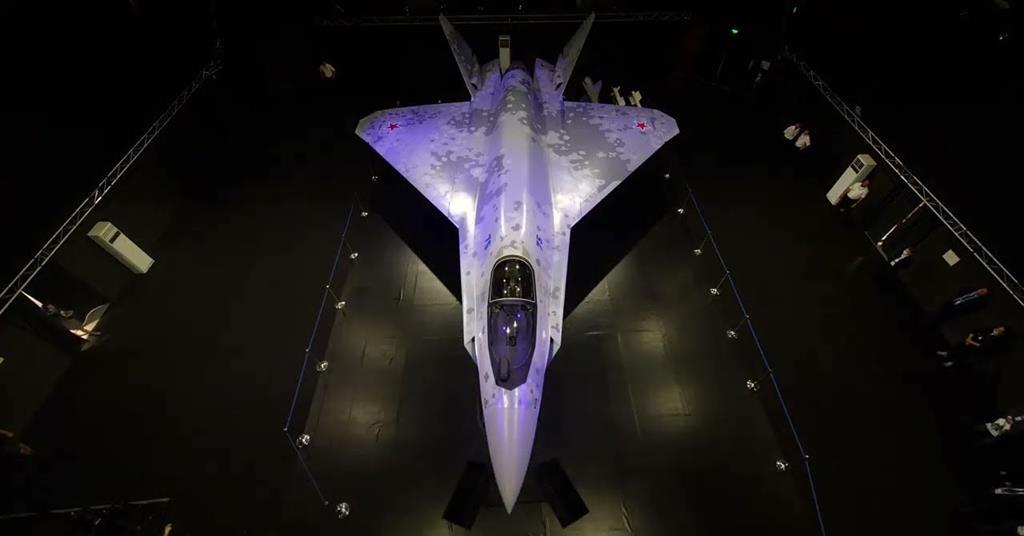
Russia to launch Su-75 Checkmate production in 2027, Rostec says
Sukhoi's Su-75 Checkmate fighter will enter serial production in 2027, state-owned conglomerate Rostec says, indicating a delay from a target outlined by Russia's United Aircraft late last year.
Russia to start serial production of the fifth-generation light fighter Checkmate in 2027, Rostec CEO Sergei Chemezov said Wednesday at a meeting with President Vladimir Putin. Work is in progress on the designer documentation for the light fighter jet Checkmate. Its serial production will begin in 2027, Rostec corporation’s CEO Sergey Chemezov said at a meeting with President Vladimir Putin on Wednesday.
"We have plans for starting serial production in 2027," he said. So far, a prototype has been created and designer documentation is being developed. "We borrowed the onboard equipment and the engine from the fifth-generation fighter Sukhoi-57, but reconfigured them somewhat," Chemezov said, adding that Rostec was creating the plane on its own money without drawing budget funds. He hopes that the Defense Ministry will agree to purchase the plane.
Attachments
Last edited by a moderator:
FighterJock
ACCESS: Top Secret
- Joined
- 29 October 2007
- Messages
- 4,218
- Reaction score
- 3,406
Received email saying Checkmate production will start 2027.

Russia to launch Su-75 Checkmate production in 2027, Rostec says
Sukhoi's Su-75 Checkmate fighter will enter serial production in 2027, state-owned conglomerate Rostec says, indicating a delay from a target outlined by Russia's United Aircraft late last year.www.flightglobal.com
'
Russia to start serial production of the fifth-generation light fighter Checkmate in 2027, Rostec CEO Sergei Chemezov said Wednesday at a meeting with President Vladimir Putin. Work is in progress on the designer documentation for the light fighter jet Checkmate. Its serial production will begin in 2027, Rostec corporation’s CEO Sergey Chemezov said at a meeting with President Vladimir Putin on Wednesday.
"We have plans for starting serial production in 2027," he said. So far, a prototype has been created and designer documentation is being developed. "We borrowed the onboard equipment and the engine from the fifth-generation fighter Sukhoi-57, but reconfigured them somewhat," Chemezov said, adding that Rostec was creating the plane on its own money without drawing budget funds. He hopes that the Defense Ministry will agree to purchase the plane.
2027 will be a long time away for Checkmate production to start, by then NGAD and Tempest will have flown and Russia will be playing catch-up again.
Ainen
I really should change my personal text
- Joined
- 25 August 2011
- Messages
- 476
- Reaction score
- 438
Frigate-priced aircraft are hardly in the same niche with it in the first place.Received email saying Checkmate production will start 2027.

Russia to launch Su-75 Checkmate production in 2027, Rostec says
Sukhoi's Su-75 Checkmate fighter will enter serial production in 2027, state-owned conglomerate Rostec says, indicating a delay from a target outlined by Russia's United Aircraft late last year.www.flightglobal.com
'
Russia to start serial production of the fifth-generation light fighter Checkmate in 2027, Rostec CEO Sergei Chemezov said Wednesday at a meeting with President Vladimir Putin. Work is in progress on the designer documentation for the light fighter jet Checkmate. Its serial production will begin in 2027, Rostec corporation’s CEO Sergey Chemezov said at a meeting with President Vladimir Putin on Wednesday.
"We have plans for starting serial production in 2027," he said. So far, a prototype has been created and designer documentation is being developed. "We borrowed the onboard equipment and the engine from the fifth-generation fighter Sukhoi-57, but reconfigured them somewhat," Chemezov said, adding that Rostec was creating the plane on its own money without drawing budget funds. He hopes that the Defense Ministry will agree to purchase the plane.
2027 will be a long time away for Checkmate production to start, by then NGAD and Tempest will have flown and Russia will be playing catch-up again.
While it probably won't be as affordable as they claim (order of magnitude cheaper, lol) - there will be a difference nonetheless.
kaiserd
I really should change my personal text
- Joined
- 25 October 2013
- Messages
- 1,665
- Reaction score
- 1,616
Those with any real choices won’t be going near the Su-75 unless the underlying circumstances are radically different than those right now.
Potentially being slightly cheaper isn’t going to make any material difference to how unpalatable it is for anyone who isn’t already part of the small captive market that already can’t take their business elsewhere.
Potentially being slightly cheaper isn’t going to make any material difference to how unpalatable it is for anyone who isn’t already part of the small captive market that already can’t take their business elsewhere.
Yep. Already we had the export market that UAC was offering its planes to start shrinking due to new US policies (CAATSA).
And now with Russia being effectively isolated from a lot of countries - the number of countries that would otherwise be neutral enough to go for a Russian made plane has likely shrunk even further.
While I guess UAE is still theoretically possible as a customer, the best and biggest chance Checkmate has of getting procured by someone is if Russian Air Force buys it.
Another thing to consider is lack of western sourced components, production machinery etc. Of course the big items are Russian sourced, but every production chain has various tiny components down the chain that may or may not be fully available right now. So it's a factor that may require some extra time to be settled. I would imagine it's not such an issue for LTS as it would be for planes currently in production but still...
And now with Russia being effectively isolated from a lot of countries - the number of countries that would otherwise be neutral enough to go for a Russian made plane has likely shrunk even further.
While I guess UAE is still theoretically possible as a customer, the best and biggest chance Checkmate has of getting procured by someone is if Russian Air Force buys it.
Another thing to consider is lack of western sourced components, production machinery etc. Of course the big items are Russian sourced, but every production chain has various tiny components down the chain that may or may not be fully available right now. So it's a factor that may require some extra time to be settled. I would imagine it's not such an issue for LTS as it would be for planes currently in production but still...
bloody sky
ACCESS: Confidential
- Joined
- 3 September 2021
- Messages
- 82
- Reaction score
- 85
China?To start serial production one first needs a customer. So who is the customer?
- Joined
- 2 January 2006
- Messages
- 3,524
- Reaction score
- 3,121
China?To start serial production one first needs a customer. So who is the customer?
China?? why should they get - or in fact make a Russian project possible - when they have their own ones already in production and flight testing?
- Joined
- 18 October 2006
- Messages
- 3,870
- Reaction score
- 3,707
IranChina?To start serial production one first needs a customer. So who is the customer?
China?? why should they get - or in fact make a Russian project possible - when they have their own ones already in production and flight testing?
I'm sure they wouldn't mind buying a couple dozen as a tech transfer like they did the Su-35, but clearly they can produce their own designs now and have no interest in being reliant on other country's aircraft and parts streams.China?To start serial production one first needs a customer. So who is the customer?
China?? why should they get - or in fact make a Russian project possible - when they have their own ones already in production and flight testing?
Cannonfodder43
ACCESS: Confidential
- Joined
- 8 December 2019
- Messages
- 107
- Reaction score
- 263
Checkmate will in all likelihood be more expensive than they plan or claim. Such is the nature with such projects.Frigate-priced aircraft are hardly in the same niche with it in the first place.
2027 will be a long time away for Checkmate production to start, by then NGAD and Tempest will have flown and Russia will be playing catch-up again.
While it probably won't be as affordable as they claim (order of magnitude cheaper, lol) - there will be a difference nonetheless.
But while 2027 may be a ways off Checkmate has taken physical shape. Benefiting from Felon developments and investment it is certainly off to a better start than FCAS or Tempest IMO.
Many things in Russian military development can justifiably be called vaporware. But the Felon and Checkmate are not based on past history and considering the investments already made.
- Joined
- 2 January 2006
- Messages
- 3,524
- Reaction score
- 3,121
I'm sure they wouldn't mind buying a couple dozen as a tech transfer like they did the Su-35, but clearly they can produce their own designs now and have no interest in being reliant on other country's aircraft and parts streams.China?To start serial production one first needs a customer. So who is the customer?
China?? why should they get - or in fact make a Russian project possible - when they have their own ones already in production and flight testing?
Agreed ... but they also won't pay any additional money for a fighter they don't really need, that competes with their own ones on thee export market only to complete its development.
Acatomic
ACCESS: Confidential
- Joined
- 18 October 2020
- Messages
- 150
- Reaction score
- 271
A bit of news:
The fifth-generation Checkmate fighter will receive an all-angle nozzle
TsAMTO, June 15. The fifth-generation single-engine light tactical fighter developed in Russia Checkmate will receive an all-angle nozzle, according to a patent published by Sukhoi.
"The rotary jet nozzle of the aircraft engine is located along the axis of symmetry of the fuselage and is used for control and balancing in flight, can be made either deflected only up and down in the vertical plane or all-course," the document states.
Previously, there were no serial single-engine aircraft with an all-angle engine nozzle in the world.
As explained to RIA Novosti in Rostec, the installation of such an element will not only improve the takeoff and landing characteristics, but also provide the aircraft with super maneuvility.
"Previously, it was planned to equip the aircraft with an engine with a controlled thrust vector (UVT) only in the vertical plane. First of all, it is necessary for a shortened take-off distance - this is one of the requirements for full-fledged fifth-generation aircraft. Today we decided to add an option to install an engine with an all-rate-rate UVT at the request of the customer. The aircraft with such a nozzle will receive maneuverability significantly superior to the capabilities of "classic" single-engine cars," the corporation told RIA Novosti.
Rostec added that the presence of an option with an all-course nozzle will increase the adaptability of the aviation platform and allow you to configure the aircraft in accordance with the wishes of the customer.
- Joined
- 11 March 2012
- Messages
- 3,016
- Reaction score
- 2,695
That all-course nozzle will probably quickly over-load a human pilot causing G induced loss of consciousness.
Its full usage will probably be limited to un-manned versions of Checkmate.
The next question is how many Third-World countries will be able to afford to field significant numbers of un-manned Checkmates, plus the fragile software. Russians will only update software on Checkmates owned by their best-behaved clients.
Rumor has it that John Deere has refused to supply spare parts or updated software to farm tractors "requisitioned" by Russian soldiers invading Ukraine. Another rumor has it that Ukrainian-owned tractors - that were transported across the border into Russian - have been silenced/grounded/rendered inoperable by software.
Its full usage will probably be limited to un-manned versions of Checkmate.
The next question is how many Third-World countries will be able to afford to field significant numbers of un-manned Checkmates, plus the fragile software. Russians will only update software on Checkmates owned by their best-behaved clients.
Rumor has it that John Deere has refused to supply spare parts or updated software to farm tractors "requisitioned" by Russian soldiers invading Ukraine. Another rumor has it that Ukrainian-owned tractors - that were transported across the border into Russian - have been silenced/grounded/rendered inoperable by software.
Acatomic
ACCESS: Confidential
- Joined
- 18 October 2020
- Messages
- 150
- Reaction score
- 271
On the topic of TVC and it's usefulness, here is an article for Eurofighter TVC study:

 www.flightglobal.com
www.flightglobal.com
To add to this is also maintaining optimal RCS since there is no need to use aerodynamic control surfaces.

Eurojet pushes thrust-vectoring technology for Typhoon
The consortium behind the Eurofighter Typhoon is a firm believer in the operational and cost benefits of thrust vectoring. Now it must convince the customers
Think about thrust vectoring and the image that probably springs to mind is that of an experimental fighter wowing the crowds at an air show, as the pilot pulls off seemingly impossible post-stall manoeuvres in an imaginary dogfight.
This is a pre-conception that Eurofighter Typhoon engine supplier Eurojet is attempting to dispel as it prepares to begin briefing the aircraft's current and prospective customer nations on the real-world benefits it envisages the technology could deliver to their air forces. The message is that thrust vectoring is about more than just agility.
Having demonstrated the mechanics of the concept in extensive benchtests, the engine consortium is trying to secure funds to fly its thrust vectoring nozzle (TVN) on a flight demonstrator. This, it believes, would provide data to back up its claims that TVN could reduce fuel burn on a typical Typhoon mission by up to 5%, as well as increase available thrust in supercruise by up to 7% and take-off thrus
HIGH SPEED
Costa Krämer says that in terms of thrust vectoring, "most operationally significant is the speed that it gives you in supercruise, because obviously the pilots are very keen on low observability at high speed. This is really an immediate operational advantage. This number - 7% more thrust in supercruise - is quite a remarkable achievement."
The Typhoon is designed to provide the pilot with "care free" engine handling to reduce workload, and this would not change with the introduction of thrust vectoring, says Eurojet engineering director Wolfgang Sterr. The TVN has several degrees of freedom, enabling it to deliver control forces in pitch and yaw, while optimising the throat ("A8") and exit ("A9") areas to suit flight conditions, for example in supersonic cruise where a divergent configuration is required to accelerate the gas flow for increased thrust.
"It is not possible [to do this] for the existing nozzle, which has a fixed schedule between A8 and A9, optimised for certain conditions only," says Sterr. "With the TVN you can reduce the fuel burn and life cycle costs as well, in certain parts of the envelope," he adds.
The result is better propulsive efficiency, which in turn could reduce fuel burn on a typical mission by "round about 3-5%".
The "balanced beam" design of the TVN enables weight to be minimised as there are "forces working against each other so the actuator forces are quite low", says Sterr.
REDUNDANCY
Osterhuber points out that an extra control surface means additional redundancy in the event of the aircraft sustaining damage during combat. For example, the Typhoon has two pitch effectors (its canards and the wing trailing edge), but the TVNs provide a third.
"If you lose one [pitch effector], you have two surfaces left to take over the required moment," he says. This function would be integrated with the flight-control system and therefore fully automated.
A further safety boost would be increased controllability at low speeds such as during the landing approach, particularly during gust conditions. This improved handling would also enhance the ability of the Typhoon to "bring back" asymmetric weapons loads, or even take-off with a single stand-off weapon such as the MBDA Storm Shadow.
Thrust vectoring could in addition be used to reduce approach speed, opening the door to a potential naval version of the Typhoon, which has attracted the attention of at least one potential export customer, according to Costa Krämer.
A spin-off of using the TVN as a control surface is that thrust vectoring can be used to trim the aircraft and "unload" the flight- control surfaces, thereby reducing drag and/or increasing lift. The conventional control surfaces are meanwhile "liberated" from their role as trim devices and can be used to enhance manoeuvrability.
In supersonic flight, even small flap deflections can cause large amounts of drag.
"If you have thrust vectoring, you can put your aerodynamic surfaces in the best position to give optimum lift and drag, because you do not need to trim the aircraft with aerodynamic surfaces," says Osterhuber.
TRIM-DRAG REDUCTION
The TVN's ability to enable the engine to produce thrust more efficiently, coupled with the trim-drag reduction, results in a "double win", says Eurojet's Price.
He says the software control laws for the TVN are "relatively simple on our side, and we've worked with Robert and his team at EADS to understand how they would work together from a control logic point of view".
"There are benefits all over the place," says Eurojet's Sterr. "You can reduce your take-off distances considerably because you are able to rotate the aircraft much earlier with thrust vectoring to generate the lift. You can't generate a moment without thrust vectoring to rotate earlier."
It is clear that customers will not pay for thrust-vectoring simply to enable their Typhoons to pull post-stall air show stunts, but with so many other potential benefits available, Eurojet wants to deliver the message to the customer nations in the right way.
"There's a prejudice that we have to break, and we have to make sure we do that in a robust way, and time it both in terms of the market that's out there, and in terms of the information that we can bring," says Price.
To add to this is also maintaining optimal RCS since there is no need to use aerodynamic control surfaces.
Last edited:
paralay
ACCESS: Top Secret
,
Last edited:
On the topic of TVC and it's usefulness, here is an article for Eurofighter TVC study:

Eurojet pushes thrust-vectoring technology for Typhoon
The consortium behind the Eurofighter Typhoon is a firm believer in the operational and cost benefits of thrust vectoring. Now it must convince the customerswww.flightglobal.com
HIGH SPEED
Costa Krämer says that in terms of thrust vectoring, "most operationally significant is the speed that it gives you in supercruise, because obviously the pilots are very keen on low observability at high speed. This is really an immediate operational advantage. This number - 7% more thrust in supercruise - is quite a remarkable achievement."
The Typhoon is designed to provide the pilot with "care free" engine handling to reduce workload, and this would not change with the introduction of thrust vectoring, says Eurojet engineering director Wolfgang Sterr. The TVN has several degrees of freedom, enabling it to deliver control forces in pitch and yaw, while optimising the throat ("A8") and exit ("A9") areas to suit flight conditions, for example in supersonic cruise where a divergent configuration is required to accelerate the gas flow for increased thrust.
"It is not possible [to do this] for the existing nozzle, which has a fixed schedule between A8 and A9, optimised for certain conditions only," says Sterr. "With the TVN you can reduce the fuel burn and life cycle costs as well, in certain parts of the envelope," he adds.
The result is better propulsive efficiency, which in turn could reduce fuel burn on a typical mission by "round about 3-5%".
The "balanced beam" design of the TVN enables weight to be minimised as there are "forces working against each other so the actuator forces are quite low", says Sterr.
Be careful about generalizing the benefits here, this one for example isn't an inherent advantage of any and all forms of TVC. It's specific to the case of a base engine with a fixed nozzle exit/throat area characteristic receiving a TVC system which (apart from deflecting the thrust vector) provides independent control of these areas. Unlike their Western contemporaries, modern Russian fighter engines (non-TVC RD-33 and AL-31F families) already have nozzles with independent exit/throat area control IIRC, so this benefit won't accrue because it's built in anyway.
- Joined
- 15 January 2021
- Messages
- 232
- Reaction score
- 755
The prototype F100 engines had adjustable A8/A9 scheduling with a Divergent Engine Nozzle Control (DENC) along with the Convergent Engine Nozzle Control (CENC). The DENC was deleted for cost and weight, and the F100 divergent flap trailing edge struts were given slotted mounts that allowed the divergent A9 to float further open under supersonic conditions with a higher nozzle pressure ratio. TF30/F111 and J58/SR-71 both had blow-in door ejector nozzles with free floating divergent flaps to increase the A8/A9 ratio under high supersonic / high nozzle pressure ratio conditions.
The F-22/F119 vectoring nozzle has full authority over setting A8/A9 to optimize performance over the full flight envelope.
The F-22/F119 vectoring nozzle has full authority over setting A8/A9 to optimize performance over the full flight envelope.
Acatomic
ACCESS: Confidential
- Joined
- 18 October 2020
- Messages
- 150
- Reaction score
- 271
First flight delayed until 2025:
And will receive the same communication equipment as Su-57:
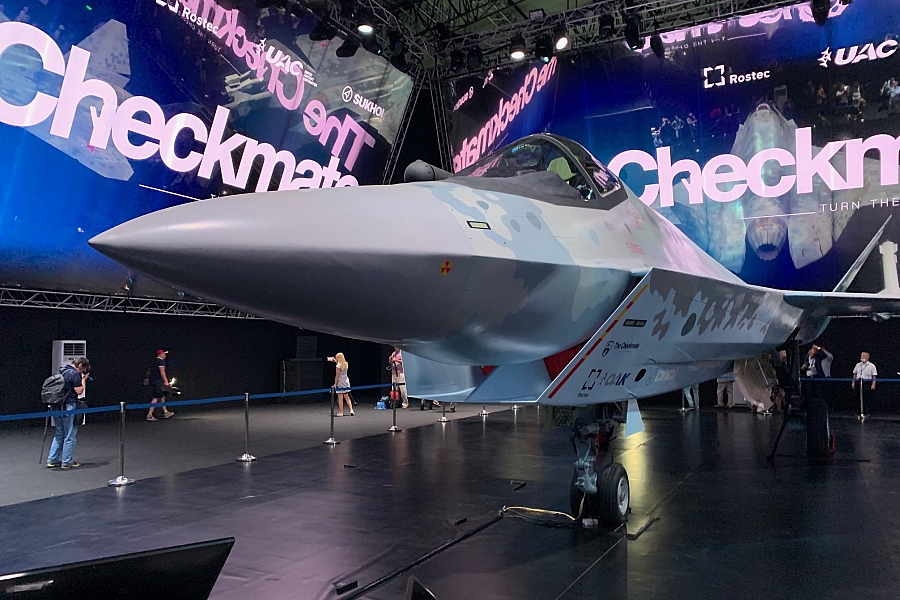
And will receive the same communication equipment as Su-57:
August 4, 2022, AviaStat.ru - A promising Russian single-engine Checkmate aircraft will receive a communication complex from the fifth-generation Su-57 fighter. This was reported to TASS by the press service of Roselectronics Holding of Rostec State Corporation.
"This communication complex [from the Su-57] is planned to be installed on a promising Checkmate fighter. At the same time, due to a number of technical solutions, a reduction in the cost of equipment will be achieved while maintaining the high efficiency of the communication system," the holding said.
Earlier, Roselectronics Holding reported that in the autumn of 2022, tests of the modernized communication complex for the Su-57 fighter will begin, now prototypes are in the process of manufacture.
The communication complex is being developed at the research and production enterprise "Polet" of the holding "Roselectronics" (part of the state corporation "Rostec").

Однодвигательный истребитель Checkmate получит комплекс связи от Су-57
Перспективный российский однодвигательный самолет Checkmate получит комплекс связи от истребителя пятого поколения Су-57.
www.aex.ru
They really hyping that the thing that they show in MAKS 2021 can fly when the real avionic and real engine installed inside it. So it's pretty hard for people to understand what holding them make it fly in 2023 like what they said.
Static load test can be done with 2nd prototype.
Not saying they dumb and should risking alot of people with stay in original target. Just saying they should have put more realistic target at the first place (2024/25).
But atleast 2025 is more exciting because AMCA and TF-X will doing something in that year too.
Static load test can be done with 2nd prototype.
Not saying they dumb and should risking alot of people with stay in original target. Just saying they should have put more realistic target at the first place (2024/25).
But atleast 2025 is more exciting because AMCA and TF-X will doing something in that year too.
So certain country seems really interested to do cooperation on Checkmate. But who is that? Algeria? Vietnam?
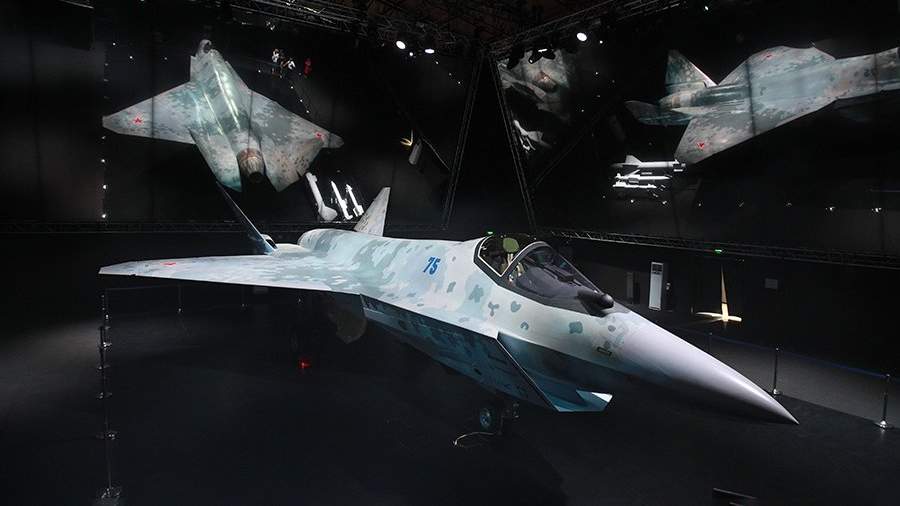
 iz.ru
iz.ru

В России готовы совместно с другими странами производить Су-75
Россия готова производить в кооперации однодвигательные истребители Checkmate (Су-75). Об этом 16 августа сообщил директор Федеральной службы по военно-техническому сотрудничеству России Дмитрий Шугаев.
Jackonicko
ACCESS: Secret
- Joined
- 4 February 2009
- Messages
- 273
- Reaction score
- 506
Tempest won't. A Tempest demonstrator, maybe.Received email saying Checkmate production will start 2027.

Russia to launch Su-75 Checkmate production in 2027, Rostec says
Sukhoi's Su-75 Checkmate fighter will enter serial production in 2027, state-owned conglomerate Rostec says, indicating a delay from a target outlined by Russia's United Aircraft late last year.www.flightglobal.com
'
Russia to start serial production of the fifth-generation light fighter Checkmate in 2027, Rostec CEO Sergei Chemezov said Wednesday at a meeting with President Vladimir Putin. Work is in progress on the designer documentation for the light fighter jet Checkmate. Its serial production will begin in 2027, Rostec corporation’s CEO Sergey Chemezov said at a meeting with President Vladimir Putin on Wednesday.
"We have plans for starting serial production in 2027," he said. So far, a prototype has been created and designer documentation is being developed. "We borrowed the onboard equipment and the engine from the fifth-generation fighter Sukhoi-57, but reconfigured them somewhat," Chemezov said, adding that Rostec was creating the plane on its own money without drawing budget funds. He hopes that the Defense Ministry will agree to purchase the plane.
2027 will be a long time away for Checkmate production to start, by then NGAD and Tempest will have flown and Russia will be playing catch-up again.
But Tempest, SCAF/NGF and NGAD are the first of a new generation of 'systems of systems'. Checkmate belongs to the past generation of platforms.
By the same logic Kf-21, F-35 and other gen-5 planes are also obsolete.Tempest won't. A Tempest demonstrator, maybe.Received email saying Checkmate production will start 2027.

Russia to launch Su-75 Checkmate production in 2027, Rostec says
Sukhoi's Su-75 Checkmate fighter will enter serial production in 2027, state-owned conglomerate Rostec says, indicating a delay from a target outlined by Russia's United Aircraft late last year.www.flightglobal.com
'
Russia to start serial production of the fifth-generation light fighter Checkmate in 2027, Rostec CEO Sergei Chemezov said Wednesday at a meeting with President Vladimir Putin. Work is in progress on the designer documentation for the light fighter jet Checkmate. Its serial production will begin in 2027, Rostec corporation’s CEO Sergey Chemezov said at a meeting with President Vladimir Putin on Wednesday.
"We have plans for starting serial production in 2027," he said. So far, a prototype has been created and designer documentation is being developed. "We borrowed the onboard equipment and the engine from the fifth-generation fighter Sukhoi-57, but reconfigured them somewhat," Chemezov said, adding that Rostec was creating the plane on its own money without drawing budget funds. He hopes that the Defense Ministry will agree to purchase the plane.
2027 will be a long time away for Checkmate production to start, by then NGAD and Tempest will have flown and Russia will be playing catch-up again.
But Tempest, SCAF/NGF and NGAD are the first of a new generation of 'systems of systems'. Checkmate belongs to the past generation of platforms.
But Tempest will start serial production at least in mid 30es, if gen5 development times are anything to go by, NGAD maybe earlier somewhat, and IOC in 40es.
And they likely would be offered for export even later, as with current turbulent times one needs to improve own capabilities first.
Also note that LMFS is not a direct competitor to the former two, as both are high end products, whereas main motto of LMFS is "Gen5 cheap enough with modular setup based on your desires", and for RuAF itself its role would be a rank filler to increase numbers/fill the gaps.
But I myself have doubts about Tempest and other gen6 from EU, as UK and others are going straight from gen4 to gen6 skipping gen5. Too ambitious and risky.
Last edited:
Similar threads
-
MAKS 2021 Airshow General News Topic
- Started by overscan (PaulMM)
- Replies: 35

